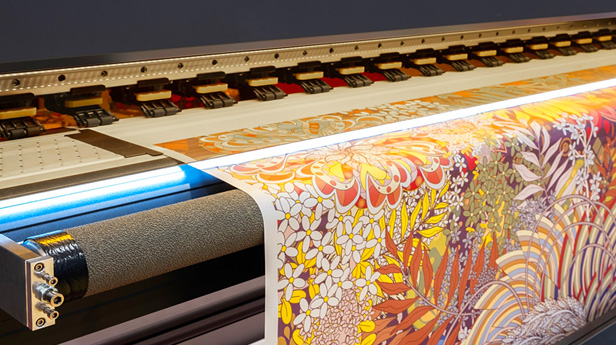Key Takeaways
• Strategic Expansion: Commercial print is a natural and profitable extension for promotional products distributors. By offering both print and promo, distributors can meet broader client needs, increase order value and position themselves as strategic partners rather than just vendors.
• Market Opportunity: The commercial print industry is large, stable and in demand. With over $100 billion in annual revenue and strong usage across sectors, print offers distributors a way to diversify income, protect against seasonal dips and deepen client relationships through bundled services and consultative selling.
• Print’s Unique Value: Print enhances brand consistency, breaks through digital clutter and creates tactile, memorable experiences. From signage and packaging to direct mail and onboarding kits, print supports cohesive marketing campaigns and increases message retention – making it a powerful tool for client engagement and loyalty.
Promotional products distributors are experts at helping brands show up in the real world. Logos appear on everything from pens and apparel to tech gadgets and tote bags. But there’s a powerful way to expand value and boost revenue that some distributors underestimate or hesitate to pursue: commercial print.

Commercial print – from brochures and signage to direct mail and custom packaging – is a lucrative complementary service. Paired with promotional products, it delivers cohesive, high-impact brand experiences. Distributors who offer both can meet broader client needs, increase order value and elevate their role from supplier to strategic partner.
Why Print Makes Sense Now
In today’s fast-changing, competitive marketplace, commercial print offers promotional product distributors a chance to become indispensable strategic partners. For professionals already working with branded physical media, selling print can be a logical, profitable next step.

“Inboxes are crowded, and banner ads are ignored. But a tactile, well-designed print piece engages the senses.”
Lisa Cross, NAPCO Media Research
Commercial printing involves producing printed materials on paper or other two-dimensional flat substrates for marketing, communication or operational purposes. This includes everything from business cards and catalogs to signage and packaging. Unlike three-dimensional product decoration techniques like screen printing or embroidery, commercial printing uses offset, digital toner, digital inkjet or wide-format printing methods to produce high-volume, high-impact print products.
Across industries, buyers want fewer vendors who can do more. According to a 2024 NAPCO Research survey, 75% of organizations prefer working with providers that offer both print and promotional products. Organizations increasingly seek partners who can deliver a cohesive package of printed materials, from branded boxes and signage to brochures, pens, apparel, water bottles and more.
Print Works
Print remains a proven medium that continues to deliver results. According to NAPCO Research’s 2023 Annual Commercial Print Industry Trends and Strategies Service:
- 93% of communication buyers say print is an important method for their organization.
- 92% agree that printed materials drive results.
- 81% include print in their multichannel campaigns.
One of the reasons print’s still thriving is its ability to break through the digital noise. Inboxes are crowded, and banner ads are ignored. But a tactile, well-designed print piece engages the senses. The texture of the paper, the weight of a booklet or the shine of a foil-stamped logo, all create a more memorable experience.
Print Enhances Brand Consistency
Another compelling reason to incorporate commercial print is its ability to support cohesive brand communication. While promotional products often carry a logo or slogan, print can tell a more complete story. From branded stationery and marketing collateral to presentation folders and direct mail, print materials ensure that a client’s brand message is consistent across every touchpoint.
When distributors handle both promo and print, they can help clients control colors, messaging and timing across all media. This level of consistency builds brand recognition and reinforces professionalism – particularly important in industries like finance, healthcare and higher education, where brand trust is essential.
Print has permanence. It’s tactile. It engages more senses. And it increases message retention and credibility compared to digital-only channels.
Why Print Is a Smart Move for Distributors
For promotional products distributors looking to grow, differentiate and become more indispensable to clients, commercial print offers a strategic path forward. It not only complements existing services but also unlocks new opportunities to increase order size, strengthen relationships and provide added value. From market stability to natural product synergies, here are seven compelling reasons why expanding into print is a smart investment:
- Promo Buyers Are Print Buyers
Every industry that buys promotional products also buys print. From education and healthcare to finance and retail, these organizations regularly order brochures, signage, packaging, mailers and marketing collateral. - The Market Is Large & Stable
The U.S. commercial printing industry includes over 22,500 establishments and generates over $100 billion annually, and print usage remains strong across all sectors. - Print Diversifies & Protects Revenue
Offering print expands a distributor’s revenue streams and protects businesses from seasonal dips in promo spending. Print is often used for compliance, operations and ongoing marketing campaigns. - Print + Promo = Powerful Kits
Kitting is where print and promo offer a powerful advantage. A new hire kit with a branded mug and company swag becomes more meaningful when it also includes a welcome letter, brochure and ID badge. The same goes for event kits, product launches and sales kits. - Print Creates Stickier Client Relationships
Organizations who rely on a single source for both their print and promotional product needs are more likely to remain loyal over time. Distributors that offer both become embedded in the client’s day-to-day operations, not just as vendors, but as trusted partners. This deeper integration strengthens the relationship, increases retention and reduces the likelihood of competitors gaining a foothold. - Print Enables Consultative Selling
Adding print allows distributors to shift from transactional selling to solution-based selling. Instead of simply filling orders, distributors are helping clients build integrated marketing campaigns. This positions a promotional products distributor as a strategic partner and can increase the lifetime value of each account. - A Wide Network of Accessible Print Partners
There are readily available sources to procure print, including retail and wholesale print providers. Wholesale print providers (also known as trade printers) work exclusively with resellers – not end-clients – allowing a distributor to white-label their print capabilities. They provide everything from standard collateral to wide-format signs, custom packaging and even direct mail fulfillment. Working with a print provider enables a distributor to outsource print production while managing customer relationships, branding and fulfillment.
How Distributors Can Profit From Print
Integrating commercial print into a promotional products business isn’t just about offering more, it’s about unlocking new profitable ways to serve clients. Print gives distributors a powerful advantage: the ability to support marketing campaigns holistically, streamline vendor relationships and deliver cohesive, high-impact brand experiences. Whether enhancing a kit, bundling with giveaways or cross-selling to existing clients, print opens doors to deeper relationships and higher-value orders. Below are six strategies that show how distributors can start driving revenue with print today.
- Add Print to Kits: From onboarding packages to VIP mailers, combining promo with printed materials like notecards, brochures and inserts transforms items into experiences and raises the total order value.
- Sell Signage & Wide-Format: Trade shows, pop-ups, office branding and retail displays all require signage. If you’re already handling promo for an event, it’s natural to add banners, posters, floor graphics or window decals.
- Bundle Print With Giveaways: Use print to support customer campaigns. A direct mail postcard paired with a promo item (like a branded pen or notepad) becomes a complete multi-touch campaign-in-a-box. Perfect for lead generation, seasonal promotions and re-engagement.
- Cross-Sell to Existing Clients: Most promo customers already buy print, but likely from someone else. Ask current customers who manage their printing and offer to consolidate services. An organization’s familiarity with a client’s brand possesses a competitive edge in winning work.
- Offer E-Commerce Options: Create recurring revenue with custom e-commerce stores for ordering business cards, sales collateral or signage. Online stores increase retention, streamline purchasing and scale your service offerings.
- Introduce Print Into RFPs & Program Proposals: When responding to client requests for proposals or pitching new programs, include print as part of your bundled solution. This not only increases deal size but also shows your ability to provide a complete marketing solution.
Understanding Commercial Print Processes
For promotional products distributors expanding into print, understanding the core processes provides a strong foundation for advising clients and building profitable partnerships. Commercial printers use a variety of printing methods tailored to different needs, run sizes, materials and timelines. Here’s a brief overview of key printing processes used today.
- Offset Lithography: The Workhorse of High-Volume Printing
Offset printing is one of the oldest and most established commercial print methods. It uses a printing plate (made from either aluminum, polyester or paper) to transfer ink to a rubber blanket, which then presses the image onto the paper. Offset printing excels in producing large quantities of consistently high-quality materials. It’s the go-to process for magazines, catalogs, brochures and other multipage pieces that require sharp detail and color fidelity. While setup can be costly, the per-unit price drops significantly with higher volumes, making it ideal for long runs. - Digital Printing: Fast, Flexible & Personalized
Digital printing has revolutionized the industry by making short-run printing both accessible and affordable. Unlike offset, which requires physical plates, digital presses print directly from digital files using toner or ink. This method is ideal for jobs that need to be turned around quickly or personalized with variable data (such as direct mail postcards that feature individual names, addresses, customized images or QR codes.) Digital printing is perfect for small to medium runs, marketing materials and on-demand jobs, offering sharp quality without the setup time and cost. - Production Inkjet: The Rising Star in Full-Color, High-Speed Print
Inkjet printing is now a major force in commercial printing. High-speed, production-grade inkjet presses can handle massive volumes while supporting full-color and variable data capabilities. Inkjet is especially valuable for transactional documents (like billing statements), direct mail campaigns, catalogs and books. With growing support for a range of substrates and finishing options, inkjet offers an excellent balance of quality, speed and cost-efficiency, especially for mid- to large-volume applications. - Wide-Format Printing: Big, Bold & Visual
For anything larger than standard paper sizes, wide-format printing steps in. Using inkjet technology, this printing method is commonly used to produce banners, signage, posters, window graphics, wall murals and trade show displays. Wide-format presses can print on rigid materials like foam board or acrylic, as well as flexible materials like vinyl or fabric. They are essential for visual storytelling in retail, events, real estate and corporate environments. Distributors serving these markets can offer wide-format print as a high-margin, high-impact service.
For distributors looking to add print to their offerings, understanding these processes enables more strategic client conversations and stronger partnerships with trade printers. Many print providers also offer educational resources – including webinars, training sessions, and sales tools – to help distributors build confidence and effectively sell print.
For those new to the industry or looking to expand their knowledge, the PRINTING United Alliance offers an online course titled Print 101: Introduction to the Printing Industry, along with a comprehensive glossary of key print terminology.
The Full-Service Future
Commercial print is not just a complementary service; it’s a catalyst for long-term business growth. As organizations look to simplify their marketing and communication supply chains, distributors who can provide both print and promotional products will stand out as trusted full-service partners. Offering print allows for greater control over brand execution, deeper engagement across touchpoints and access to new budget opportunities. By aligning print with existing promotional services, distributors can unlock new revenue streams, enhance client retention and strengthen their position as strategic marketing advisors.

